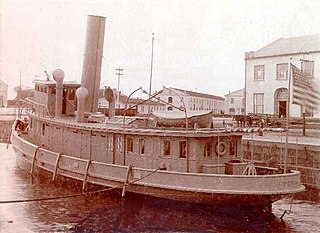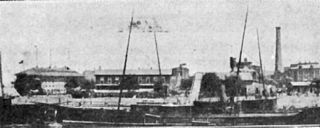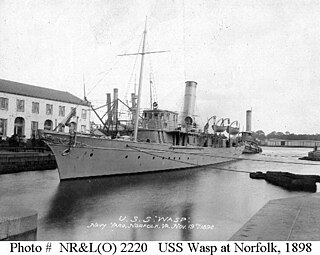 W
WThe second USS Albatross, often seen as USFC Albatross in scientific literature citations, was an iron-hulled, twin-screw steamer in the United States Navy and reputedly the first research vessel ever built especially for marine research.
 W
WThe third USS Frolic was a United States Navy patrol yacht in commission in 1898, from 1900 to 1906, and from 1906 to 1907. She served briefly during the Spanish–American War.
 W
WUSS Hawk (PY-2/IX-14) was the converted British-built civilian yacht Hermione of 1891, acquired for service as a patrol yacht in the Spanish–American War. She later served in the Ohio and New York naval militias and on the Great Lakes until decommissioned in 1940.
 W
WUSRC Hudson, known for her service during the Battle of Cárdenas, was the United States Revenue Cutter Service's first vessel to have a steel hull and triple-expansion steam engine.
 W
WUSS Inca (1898) was a small 120 long tons (120 t) yacht acquired by the United States Navy during the Spanish–American War. She was outfitted with an 11-pounder gun and, for a short while, patrolled Boston Harbor, before being turned over to the Massachusetts militia as a training ship, a role she retained until 1908.
 W
WUSS Katahdin, a harbor-defense ram of innovative design, was the second ship of the United States Navy to be named for Mount Katahdin, a mountain peak in Maine.
 W
WUSS Merrimac was a United States Navy collier during the Spanish–American War. It was the only American vessel sunk by the Spanish navy in that conflict.
 W
WThe first USS Panther (AD-6), the former SS Venezuela, was an auxiliary cruiser and naval troop transport in the United States Navy.
 W
WUSS Porter was a torpedo boat, the first of her class, launched in 1896, served during the Spanish–American War, and struck in 1912. She was the first Navy ship named for Commodore David Porter, and his son, Admiral David Dixon Porter.
 W
WThe fourth USS Scorpion was a steam yacht in commission in the United States Navy from 1898 to 1899, 1899 to 1901, and 1902 to 1927.
 W
WThe first USS Sylvia was a United States Navy patrol vessel in commission in 1898 and from 1917 to 1919. She saw service in both the Spanish–American War and World War I.
 W
WThe first USS Viking was an iron-hulled, steam yacht built in 1883 at Chester, Pennsylvania, by Delaware River Iron Ship Building and Engine Works and was acquired by the United States Navy on 22 April 1898 from Mr. Horace A. Hutchins for service in the Spanish–American War. Converted for naval service at New York, she was placed in commission there on 11 May 1898, Lt. Henry Minett in command.
 W
WUSS Vixen (PY-4) was a yacht acquired by the U.S. Navy for operations in the Spanish–American War, where she served with distinction during the Battle of Santiago. She was commissioned again for duty during World War I when she was assigned to patrol the U.S. East Coast.
 W
WThe seventh USS Wasp was the former yacht Columbia, purchased by the U.S. Navy and converted to an armed yacht serving from 1898 to 1919, with service in the Spanish–American War and World War I.
 W
WUSRC Windom was a revenue cutter of the United States Revenue Cutter Service and United States Coast Guard that served from 1896 to 1930. She was named for William Windom, the 33rd and 39th United States Secretary of the Treasury. She served during the Spanish–American War with the United States Navy. Windom was recommissioned as USCGC Comanche in 1915 and again served with the Navy as USS Comanche during World War I.
 W
WUSS Winslow was a United States Navy torpedo boat noted for its involvement at the First and Second Battle of Cardenas during the Spanish–American War. She was named for Rear Admiral John Ancrum Winslow.